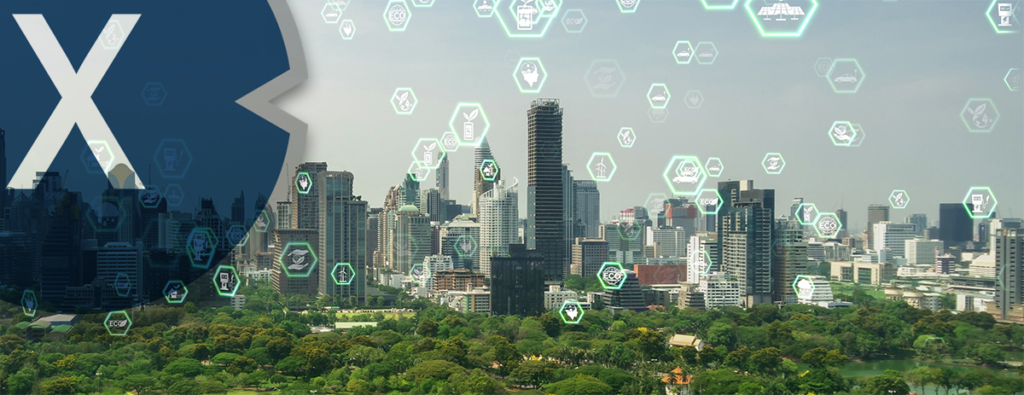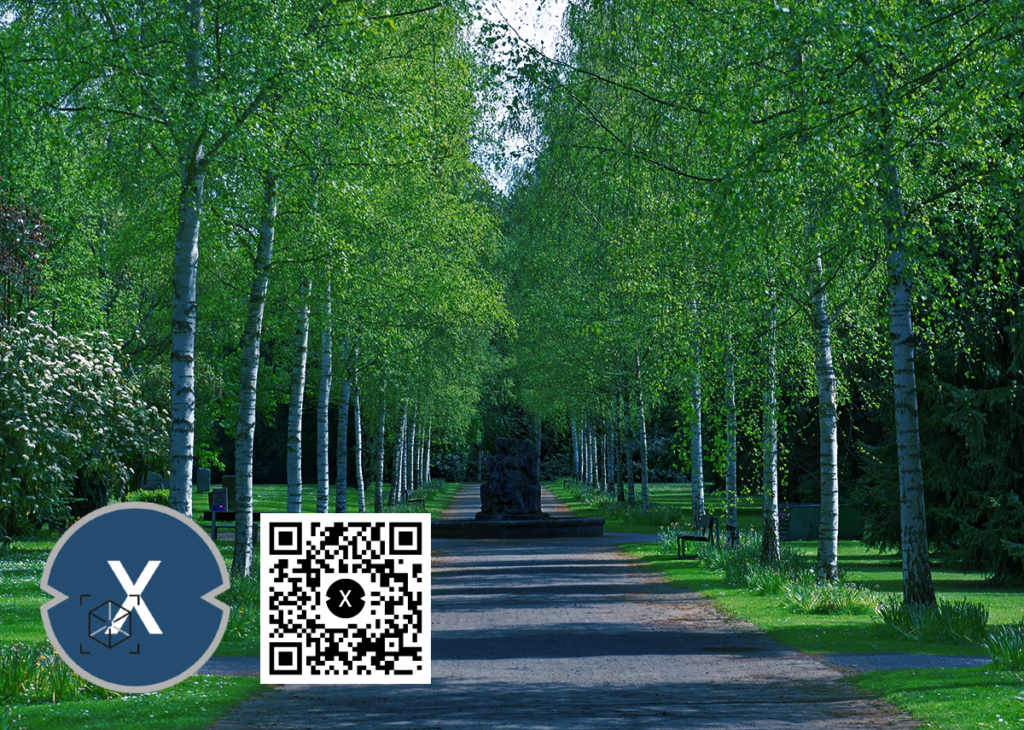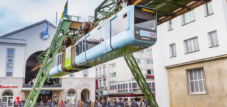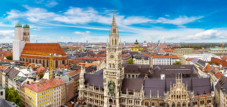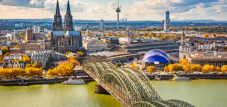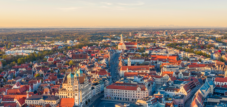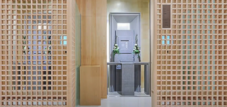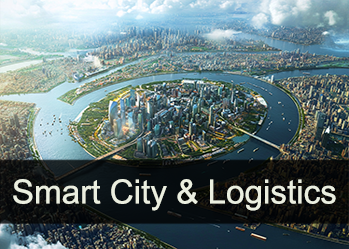Climate analysis Lünen: A look at the urban climate and its challenges – including a smart columbarium solution
Language selection 📢
Published on: July 29, 2023 / update from: August 4, 2023 - Author: Konrad Wolfenstein
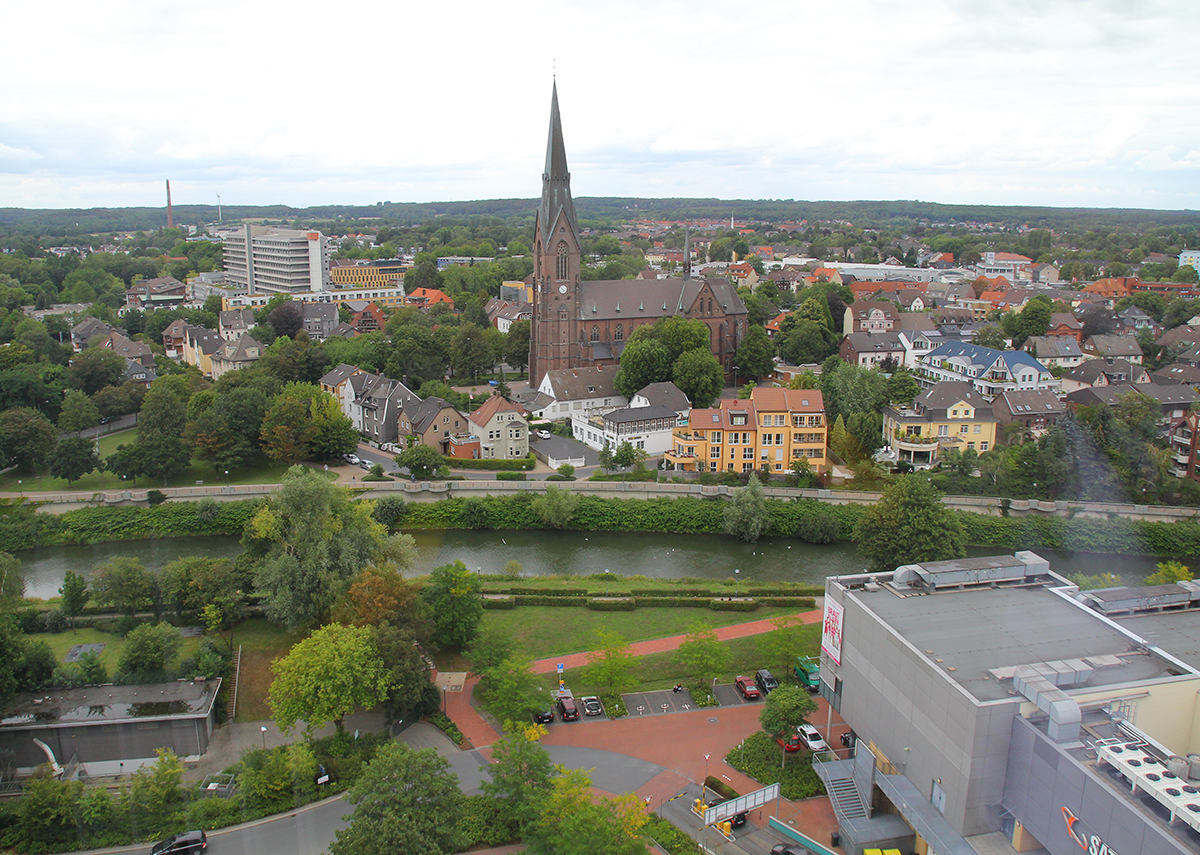
Climate analysis Lünen from the city of Lünen, including Smart Columbarium solution – Sinem Kaya|Shutterstock.com
The importance of green spaces and open spaces for the urban climate
➡️ The “Smart Columbarium” as an innovative solution
The climate analysis for Lünen underlines the crucial importance of protecting and promoting existing green spaces and open spaces. These green spaces play a diverse role in the urban climate and the quality of life of residents. Not only do they offer space for recreation and relaxation, but they also act as important green corridors and lungs of the city. Thanks to their properties, they actively contribute to improving air quality by binding CO₂ and filtering pollutants. Optimal preservation and care of these green spaces are therefore crucial for a healthy and pleasant living environment.
Challenges of inner-city densification
As a result of constant population growth and increasing urbanization, careful inner-city densification is essential. The aim is to use available space efficiently to meet the increasing demand for housing. However, densification also presents challenges, particularly in relation to the loss of green spaces and open spaces. In this context, it is essential to take into account the inclusion of sufficient green spaces when planning new residential areas. These green spaces make a significant contribution to making the living environment pleasant and healthy and have a positive influence on the city's microclimate.
Climatic stress in heavily built-up areas such as the city center
The climate analysis shows that heavily built-up areas such as the city center of Lünen are more affected by the climate. Intensive development, sealing and industrial activities lead to increased heat radiation and pollution. These factors have a negative impact on the microclimate and air quality of these regions. As a result, these areas may experience higher temperatures and impaired air quality, which in turn impacts the well-being of residents.
Interesting solutions that we at Xpert offer cities, communities, municipalities and companies
➡️ City solar carport modules for photovoltaic parking spaces with translucent solar modules
➡️ City Pergolas, the ideal concept for the green smart city of the future
The "Smart Columbarium" as an innovative solution for space saving and urban development
A novel and exciting solution is the “Smart Columbarium”. This concept offers the possibility of saving up to 90% of the cemetery area and using the freed-up green space for other uses. This energetic and space-optimized burial site was developed by logisticians from Japan and Germany. The “Smart Columbarium” is an innovative way of burial where urns are stored in a space-saving and technologically advanced manner. This reduces the space required for traditional graves and frees up valuable green space. These areas can then be used as a valuable contribution to improving the living environment and quality of life of residents.
The combination of protecting and promoting existing green spaces, careful inner-city densification and innovative concepts such as the “Smart Columbarium” could help cities and municipalities find a balance between urban development and environmental protection. By specifically relying on green infrastructure and developing new ways of using land, the city can preserve the positive bioclimatic conditions in residential areas and at the same time improve the climate in heavily built-up regions.
Learn from the Japanese: 91% of the population already lives in urbanized areas
More about it here:
The Smart Park or Smart Columbarium concept
The Smart Columbarium concept describes the possibility of reducing the space required for cemeteries by an impressive 90%. This innovative solution creates valuable space that can be used to create green leisure and recreation parks. This measure aims to increase the culture of well-being in the community and to provide residents with an attractive environment for their leisure activities.
More about it here:
- Smart Park: New green parks thanks to Smart Columbarium
Access code / password : daifuku
The comprehensive climate analysis of Lünen: An overview
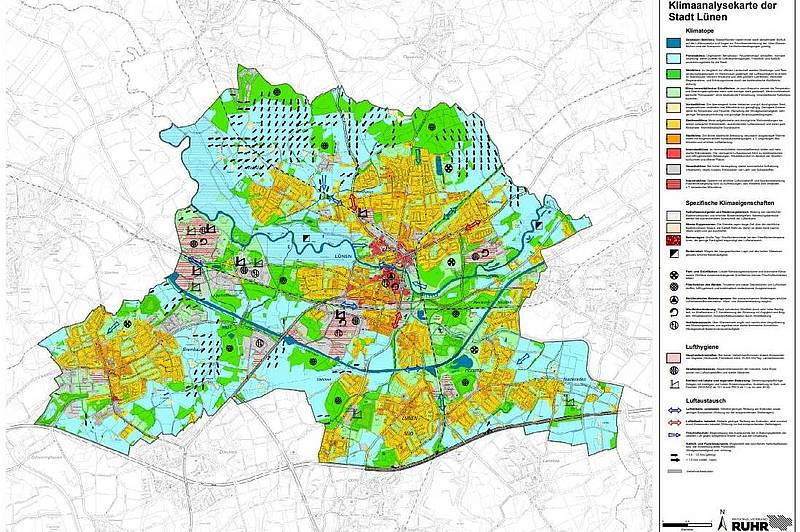
Climate analysis Overview map of the city of Lünen: City of Lünen publishes results - Image: City of Lünen
In this section, a comprehensive climate analysis of Lünen is presented, in which various climatic factors such as ground-level air temperature, night-time cooling rate and air currents were examined. The analysis shows encouraging results regarding the bioclimatic conditions in most residential areas, while heavily built-up regions such as the city center and industrial areas are more climatically polluted. Based on the results, specific urban planning and open space recommendations are proposed to maintain the positive climatic conditions. This includes the preservation of open and green buildings, the promotion of local desludging and greening measures as well as the consideration of inner-city densification and smaller new residential areas with sufficient green spaces.
Suitable for:
Climatic conditions in residential areas
The study shows encouraging results for the bioclimatic conditions in the residential areas of Lünen. These areas benefit from a pleasant air temperature close to the ground, which enables a comfortable living climate. Residents here can enjoy the benefits of a pleasant climate, which has a positive effect on their quality of life.
Climatic stress in heavily built-up regions
Unfortunately, the climatic conditions in heavily built-up areas such as the city center and industrial areas are not so pleasant. A higher level of climate pollution is found here, which is due to the dense development, sealed areas and industrial activities. Heat radiation and dust and pollutant levels are increased in these areas, which can have a negative impact on the microclimate.
Urban planning recommendations to improve the climate
In order to maintain the positive climatic conditions in the residential areas and to improve them in the heavily built-up regions, the analysis provides some urban development recommendations:
1. Preservation of open and green buildings
It is crucial to protect and promote existing green spaces and open spaces. Green spaces not only offer space for recreation and relaxation, but also serve as important green corridors and lungs of the city. These areas help improve air quality by binding CO₂ and filtering pollutants.
2. Promoting local desludging and greening measures
Through measures such as desludging water bodies and targeted greening of streets and squares, sealing can be reduced and the microclimate improved. Trees and plants not only provide shade and cooling, but also help improve humidity, which is particularly important in heavily built-up areas.
3. Consideration of inner-city densification and smaller new residential areas with sufficient green spaces
In order to reduce land consumption and still create sufficient living space, careful inner-city densification is required. However, care should be taken to ensure that new residential areas contain sufficient green spaces to ensure a pleasant and healthy living environment.
outlook
The comprehensive climate analysis of Lünen offers valuable insights into the city's climatic conditions. The positive bioclimatic conditions in residential areas should be protected and maintained, while targeted measures must be taken in heavily built-up areas to improve the microclimate. By implementing the proposed urban development recommendations, Lünen can make an important contribution to climate protection and create a livable environment for its residents.
Climate analysis Lünen: A comprehensive look at the climate in the city
Climatic conditions Lünen: influences on the city climate
The climatic conditions in Lünen play a crucial role in the city's climate and the well-being of its residents. Different factors such as geographical location, soil conditions and development have a significant influence on the local climate.
Bioclimatic analysis: effects on people and nature
The bioclimatic analysis looks at the interactions between the climate and the living organisms in Lünen. The effects on health, vegetation and ecosystems are examined in order to find sustainable solutions for a harmonious coexistence between people and nature.
Lünen city center climate: special challenges in urban areas
The climate in the city center of Lünen faces specific challenges due to the high development density and sealing. The “Urban Heat Island” effect leads to increased temperatures, while air quality is influenced by traffic and industry.
Residential areas climate Lünen: feel-good climate for the residents
The climatic conditions in the residential areas of Lünen are of particular importance for the well-being of the residents. The analysis shows how targeted measures can create a pleasant and healthy living environment.
Climatic stress in Lünen: challenges and possible solutions
Heavily built-up regions in Lünen are often more climatically polluted. The analysis identifies the causes and presents solutions to reduce the climatic impact and improve the microclimate.
Green spaces in Lünen: importance for the urban climate
The green spaces in Lünen play an important role in the city's climate. They help improve air quality, reduce heat islands and preserve biodiversity.
Open spaces in Lünen: space for relaxation and climate compensation
The open spaces in Lünen not only offer space for rest and relaxation, but also contribute to climate balance. They create important green corridors and help cool the city.
Inner-city densification of Lünen: balance between living space and green spaces
The inner-city densification in Lünen is a challenge to create sufficient living space and at the same time maintain enough green spaces. The analysis shows how sustainable urban planning can support this.
Smart Columbarium Lünen: New ways of using space
The “Smart Columbarium” in Lünen offers an innovative way of saving peace areas and releasing valuable green spaces for other uses. This solution shows the potential for climate -friendly and sustainable urban development.
Urban climate development: future prospects for Lünen
The analysis of urban climate development in Lünen enables a look into the future. Identifying trends and challenges creates the basis for targeted climate protection measures.
Climate protection measures Lünen: Action for a sustainable future
The climate analysis in Lünen points to the importance of climate protection measures. From promoting renewable energy to reducing CO2 emissions, targeted measures are crucial for a sustainable future.
Environmental protection Lünen: Climate protection as part of holistic measures
Climate protection is closely linked to environmental protection. The analysis shows how comprehensive environmental protection in Lünen can help protect the climate and improve the quality of life of residents.
Lünen air quality: influence on the climate and health
The air quality in Lünen has an impact on the climate and the health of the population. The analysis identifies sources of air pollution and suggests ways to improve air quality.
Microclimate Lünen: Local characteristics and effects
The microclimate in Lünen shows local characteristics and effects. The analysis looks at the microclimatic conditions and shows how they can be positively influenced through targeted measures.
Sustainable city planning Lünen: Climate-friendly design of urban space
Sustainable urban planning in Lünen takes climatic conditions into account and creates an urban space that protects the climate while meeting the needs of its residents.
Climate change Lünen: challenge and opportunity
The analysis highlights the effects of climate change on Lünen and at the same time shows the opportunity for a future-oriented and climate-friendly development of the city.
Climate-friendly architecture: building block for sustainable building in Lünen
Climate-friendly architecture plays a key role in shaping the urban climate in Lünen. Energy-efficient buildings and sustainable construction methods can make an important contribution to climate protection.
Lünen urban climate: A complex interaction
The urban climate in Lünen is the result of a complex interaction of various factors. The analysis shows how these factors.
Climate Analysis: A Comprehensive Look at the Climate
Introduction to climate analysis
Climate analysis is an important scientific method for studying the climate in specific regions or globally. It includes different techniques and approaches to collect and analyze data that is crucial to understanding climate.
Climate study: research and findings
A climate study involves the in-depth study of climate patterns, weather events, and climate changes over a period of time. Scientists use various data sources to identify and interpret long-term trends and short-term fluctuations.
Climate data analysis: evaluation of historical records
Climate data analysis focuses on evaluating historical climate records such as temperature data, precipitation and humidity. By using modern statistical methods, patterns and trends in the data can be identified, providing important information for assessing the current climate.
Climate investigation: research into specific phenomena
In climate studies, the focus is on researching specific climatic phenomena such as El Niño, La Niña or climate cycles. The aim is to better understand the underlying causes and effects of these phenomena and to develop possible predictive models.
Climate assessment: Assessment of climatic conditions
Climate assessment involves a comprehensive assessment of the climatic conditions in a specific area. Various factors such as temperature, precipitation, air quality and solar radiation are taken into account. The results serve as a basis for climate-related decisions and measures.
Climatic analysis: Study of climate zones and regions
Climatic analysis involves the study of climate zones and regions around the world. By identifying similar climatic features in specific areas, comparisons can be made to identify similarities and differences between different regions.
Climate observation: monitoring current climate changes
Climate observation involves the continuous monitoring of current climate changes in real time. Weather stations, satellites and other technologies are used to collect and analyze data on temperature, precipitation and other relevant parameters.
Climate data evaluation: Use of big data and technology
Modern technology and big data analysis are used to evaluate climate data. Large amounts of climate data are collected to identify patterns and trends, helping to better understand the climate and make more informed climate-related decisions.
Climate recording: data collection for forecast models
Climate sensing focuses on data collection for the development of forecast models. Climate scientists continually collect data to build models that predict future climate changes and weather events.
Climate diagnosis: analysis of the causes of climate events
Climate diagnostics deals with analyzing and researching the causes of climate events such as heat waves, droughts or heavy rain. By understanding the underlying factors, preventive measures can be taken to mitigate potential impacts.
➡️ This comprehensive presentation of the various aspects of climate analysis highlights the importance of this research discipline for understanding and dealing with the challenges of climate change. From evaluating historical data to developing forecast models, climate analysis plays a central role in the effort to better understand our climate and find sustainable solutions for the future.
Summary
The urban climate of Lünen is influenced by various factors, including the geographical location, the nature of the soil and the development. It plays an important role in the well-being of residents and therefore bioclimatic analyzes are carried out to study the impacts on people and nature.
There are specific challenges in the city center of Lünen due to the high development density and sealing, which leads to the “Urban Heat Island” effect ( urban heat islands ) and air quality problems.
The climatic conditions in the residential areas are of particular importance for the well-being of the residents, and targeted measures can create a pleasant and healthy living environment.
Heavily built-up regions in Lünen are often more climatically burdened, so solutions are being sought to reduce the burden and improve the microclimate.
Green spaces and open spaces play an important role in the urban climate and contribute to improving air quality and reducing heat islands.
Inner-city densification is a challenge to create living space while maintaining sufficient green spaces, which sustainable urban planning can support.
The “Smart Columbarium” offers an innovative way of saving peace areas and releasing valuable green spaces for other uses.
Hashtags: #climate protection #urban development #environmental protection #green spaces #sustainability
Energetic urbanization: Climate analyzes and the climate emergency declarations of cities, communities and municipalities

Energetic urbanization: climate analyzes and the master plan for 100% climate protection - Image: Xpert.Digital
Energetic urbanization refers to the process of making cities and communities more energetically efficient and sustainable. In view of advancing climate change and increasing global challenges related to energy consumption, energy urbanization is of great importance. Cities are responsible for a significant share of global emissions, but they also offer enormous potential to combat climate change and accelerate the transition to a low-carbon society.
More about it here:
Xpert.Plus Smart City & City Logistics Consulting with Konrad Wolfenstein
Xpert.Plus is a project from Xpert.Digital. We have many years of experience in supporting and advising on storage solutions and in warehouse optimization , which we bundle in a large network Xpert.Plus
I would be happy to serve as your personal advisor.
You can contact me by filling out the contact form below or simply call me on +49 89 89 674 804 (Munich) .
I'm looking forward to our joint project.
Xpert.Digital – Konrad Wolfenstein
Xpert.Digital is a hub for industry with a focus on digitalization, mechanical engineering, logistics/intralogistics and photovoltaics.
With our 360° business development solution, we support well-known companies from new business to after sales.
Market intelligence, smarketing, marketing automation, content development, PR, mail campaigns, personalized social media and lead nurturing are part of our digital tools.
You can find out more at: www.xpert.digital – www.xpert.solar – www.xpert.plus



